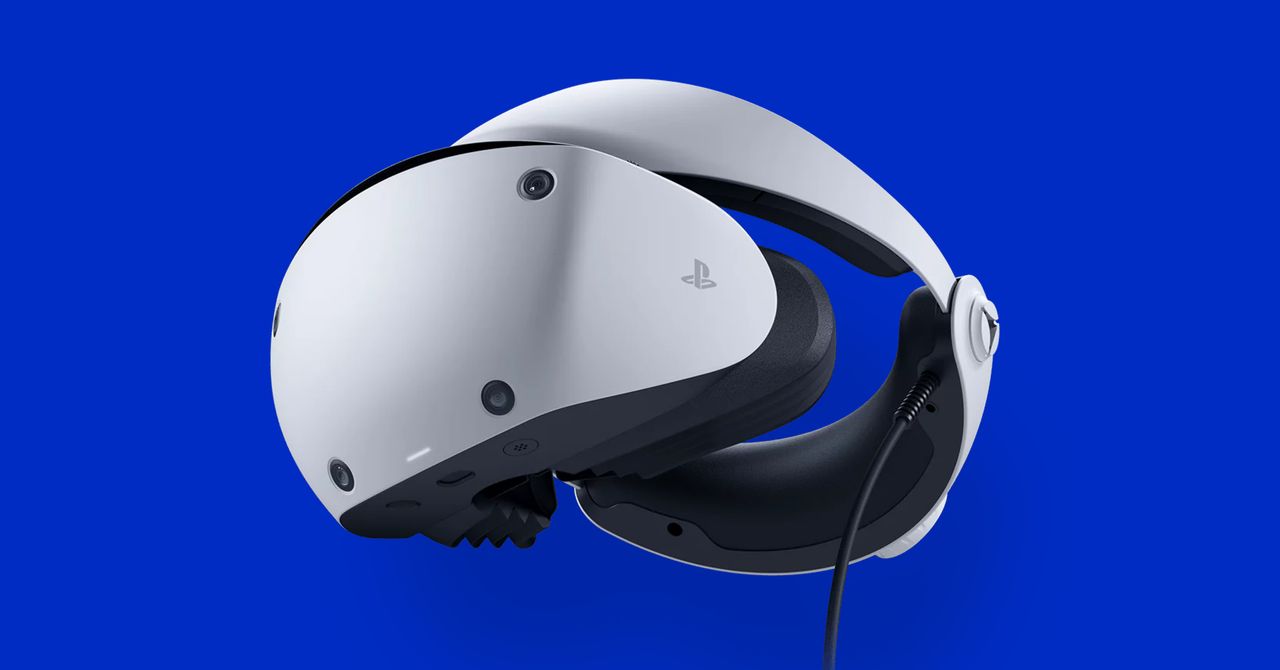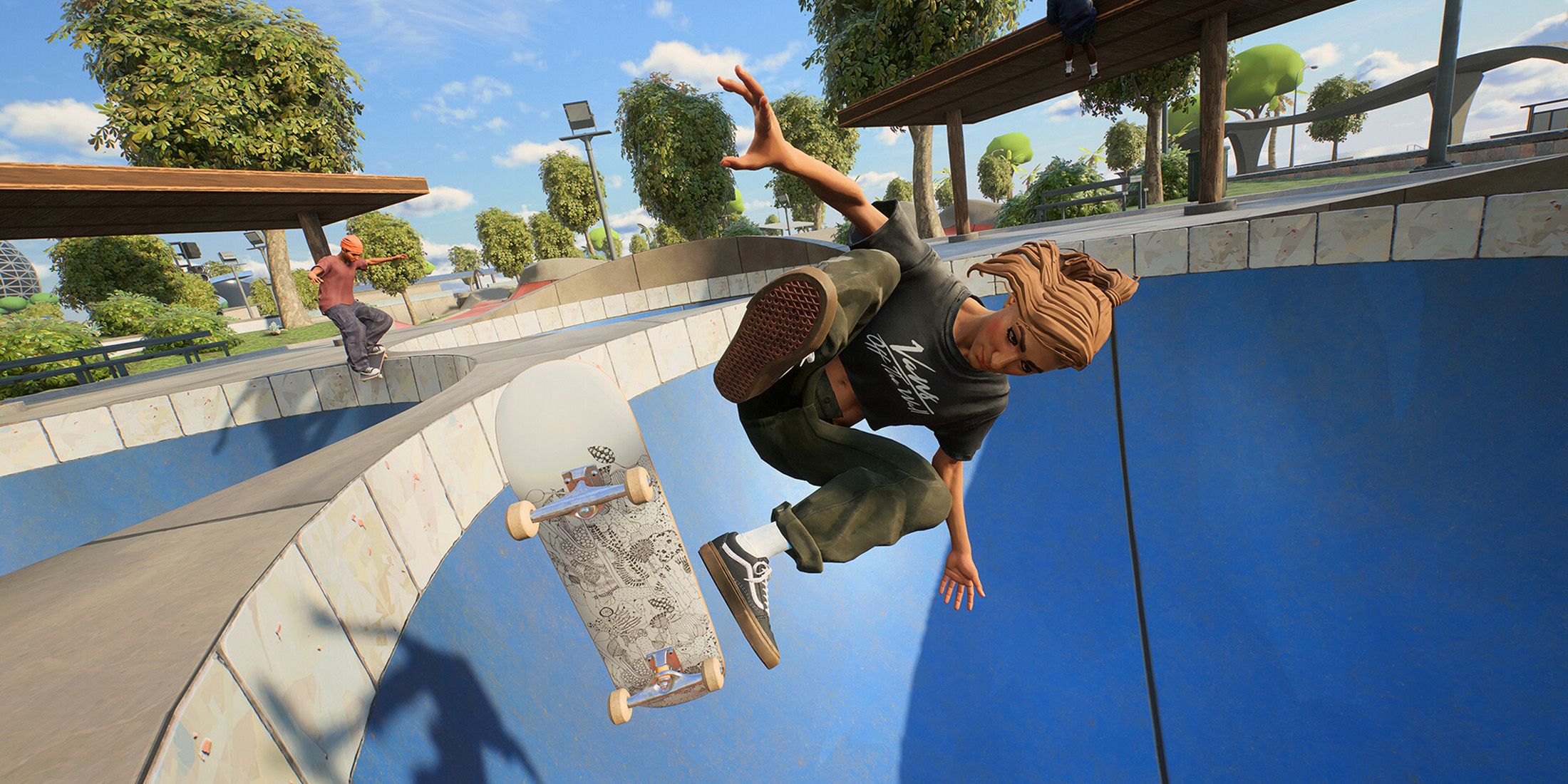
The PSVR 2 is going to suffer from severe sticker shock. On top of having to own a PS5, the headset costs $550. I'm mentioning this upfront because that's likely to turn a lot of people off before I even get to the perks of the system. But if you can bring yourself to spend more on an accessory than the console itself, there's a lot to love here.
Sony's new headset is a massive improvement over its predecessor in almost every way. Gone are the external camera and processor boxes. Now, you can just plug the headset directly into the front of your PlayStation 5. The old Move controllers (which were initially designed to compete with Nintendo's Wiimotes) have also been upgraded to more robust Sense controllers. It can even track your eye movements inside the headset itself.
The specs are also a vast improvement over its predecessor. Where the original PSVR had two 960 x 1,080-pixel resolution displays (one for each eye), the PSVR 2 bumps this up to 2,000 x 2,040. With more than twice as much detail, this is slightly better than the Meta Quest 2. They also support HDR, giving it one of the more vivid displays I've seen on a headset, especially at this price. In short, it's one of the best VR headsets you can get right now. Does that make it worth it?
A New Kind of ComfortOne of the most significant hurdles to VR adoption is making a giant piece of tech that can sit on your face without being uncomfortable. Conventional wisdom is that the best way to do that would be to make them smaller—in an Iron Man-esque fantasy world, a simple pair of glasses would be ideal—but Sony has taken a different route. And for the better.
The headset itself is fairly bulky but not heavy, per se. The lens module can slide forward or back along a track, and the headband is sturdy enough to sit on your head and distribute its weight. On the rear, there's a large dial that can be used to tighten the headband to your comfort. Compared to the Meta Quest 2—even using its upgraded strap that really should be standard—the PSVR 2 is much more comfortable.
Despite its added bulk, I found the PSVR 2 to be much easier to wear for extended periods of time than, say, the Meta Quest 2. While it left an obvious red mark on my forehead, it wasn't as painful. This is in part because it doesn't press quite as much on the sinuses, but also because the headset distributed weight more evenly around my head. I still wouldn't want to wear it for several hours, but I was able to play for an hour or two without major discomfort. In this case, bigger was definitely better.
Boasting an impressive level of detail and immersion, although accompanied by a correspondingly hefty price tag that's sure to entice mainly hardcore gamers—the PlayStation VR 2 truly lives up its tradeoff between sheer quality experiences versus cost.
The PlayStation VR 2 delivers an immersive experience that despite its hefty price tag, is undoubtedly impressive and will be a game-changer for dedicated virtual reality enthusiasts.
PlayStation VR 2 combines impressive immersion and captivating visuals with a hefty price tag that bears the hallmark of premium gaming experiences.
The PlayStation VR 2 offers an immersive experience that's truly impressive, although its price tag underscores the premium investment required for such a cutting-edge virtual reality market entry.
.The Playstation VR 2 offers an impressive level of immersion and technical efficacy, though its cost reflectsthe cutting-edge technology it incorporates – a worthy investment for the truly dedicated gaming enthusiast buta pricey entry into virtual reality worlds otherwise."
The PlayStation VR 2 is an impeccably impressive gadget that delivers a groundbreaking virtual reality experience – albeit at the expense of some consumers' wallets.
The PlayStation VR 2, while notoriously expensive for its high-end technology and elaborate design elements that elevate gaming experiences to a new realm of immersion.
The PlayStation VR 2, while undeniably costly at its launch price point amidst the growing competitive landscape of premium virtual reality experiences today and tomorrow's promises in next-gen immersive gaming technology.
The PlayStation VR 2's awe-inspiring capabilities, while accompanied by a hefty price tag reflecting the advanced technology and immersive experience it offers.
The PlayStation VR 2 offers an immersive experience that rivals anyone's expectations, though it comes with a hefty price tag.
The PlayStation VR 2 is nothing less than impressive with its cutting-edge technology and immersive gaming experience, albeit accompanied by a hefty price tag that doesn't quite make it affordable for every enthusiast.
The PS VR 2 offers a captivating immersive experience akin to an early cinematic masterpiece, albeit with the cost comparable.
The PlayStation VR 2, with its immersive technology and impressive features that push the boundaries of virtual reality gaming experience at a reasonable price point despite initial costs.
The PlayStation VR 2 presents an immersive gaming experience reminiscent of the future, but at a price that shows its technological prowess as much for those willing to invest.














